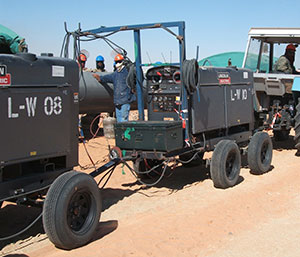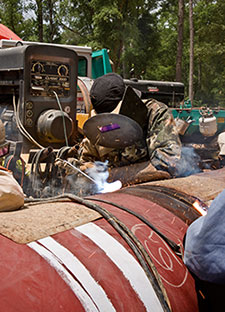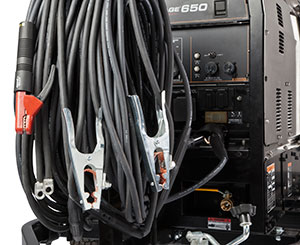Engine Driven Welder Maintenance
Covering the Basics - Engine Driven Welder Maintenance
by Al Nystrom, Technical Service Representative, Lincoln Electric
From pipeline projects to construction sites, engine driven welders are workhorses in the field that provide unmatched flexibility and power in the hands of well-trained professionals.
These versatile two-in-one machines, or three-in-one machines with an air compressor, are designed to perform at the highest levels even in the most rugged environmental conditions – think rain, cold, wind, heat and dust.
With that level of intense, on-demand functionality, engine driven welders require regular care and basic maintenance to keep them operating at optimum levels and avoid costly downtime and repairs.
ENGINE
By design, an engine driven welder harnesses the mechanical energy created by the engine and converts it to electrical energy that enables the welding function. If an engine loses horsepower, output can be significantly diminished making engine maintenance critical.
For that reason, it’s important to regularly check filters, particularly fuel filters, to ensure that there is a good fuel flow through the engine. Oil filters and air filters should be inspected regularly, and even daily on dusty worksites, because an accumulation of dust particles in the air filter can hinder performance. These filters are easily accessible and visible once the welder engine access door is opened. Filters are the first place to look if you are experiencing issues with power.
That said, it’s important that all of the suggested maintenance and care should be executed when the welder is off.
The machine should frequently be blown out with compressed air to remove dust and dirt particles from electrical components and engine parts. This should be done at least once every two weeks or more often depending on work conditions.
As one would expect, different types of engines require different types of maintenance. Every engine driven welder should be equipped with a sticker detailing a maintenance schedule that outlines the recommended practices at every 100, 200, and 500 hours of use. In addition, it is highly recommended that users consult with the owner’s manual to ensure that the correct grade of oil, proper filters and coolants are used during the process.
There is also an initial break-in period for engine driven welders. This break-in period enables the moving parts of the machine to wear against each other to make the necessary final size and shape adjustments. For the first 50 hours the machine is on, it should be engaged in at least a moderate welding load to allow the piston rings to set and make contact with the cylinder wall. The machine should not sit idle or be engaged in light use during this time. The oil should be checked every five hours, or daily, during the break-in period and topped off if oil loss is present.
GENERATOR
Engine driven welders, depending on the type, are equipped with either an AC or DC generator, and they follow similar maintenance schedules.
Both AC and DC generators require regular troubleshooting of their internal carbon brushes, which are the only electrical connection to the moving parts of the generator. Those brushes ride on the rotor (AC) and armature (DC) to make the essential connection to convert the mechanical energy into electrical energy.
Brushes should be checked monthly (when blowing out machine) to ensure that they are pushed up against the rotor or armature. They should be at least one quarter inch in length. Brushes shorter than that cannot apply necessary pressure and should be replaced.
Where these two types of generators differ – in maintenance terms – is caring for internal mechanical pieces.
On an AC generator, the rotor has brass slip rings that inevitably collect dirt that creates a filmy, black glaze. This build up can cause problems so the rings should be regularly cleaned to a nice shiny appearance using a 500-600 grit emery cloth. The rings should be checked at least once every two months.
A DC generator, however, has an armature that has a commutator and a series of copper bars that also collect grime during the welding process. In this case, rather than an emery cloth which could cause an electrical short in the armature because of its conductivity, you would use a commutator stone to clean the copper pieces. This area should be checked and cleaned, if necessary, every two months.
LEADS
When an engine driven welder is use, the welding leads should be fully extended. If the leads are left coiled, specifically around something steel, it could cause an electrical choke that will lower output.
These leads should be regularly inspected for visible cuts or damage that might suggest that they need to be replaced. Ground clamps and the electrode holder should be in good working order as well.
Troubleshooters recommend keeping a short 10-foot long set of leads on the work truck to test when issues of electrical currents arise. Sometimes leads can appear in pristine condition but no longer do their job.






